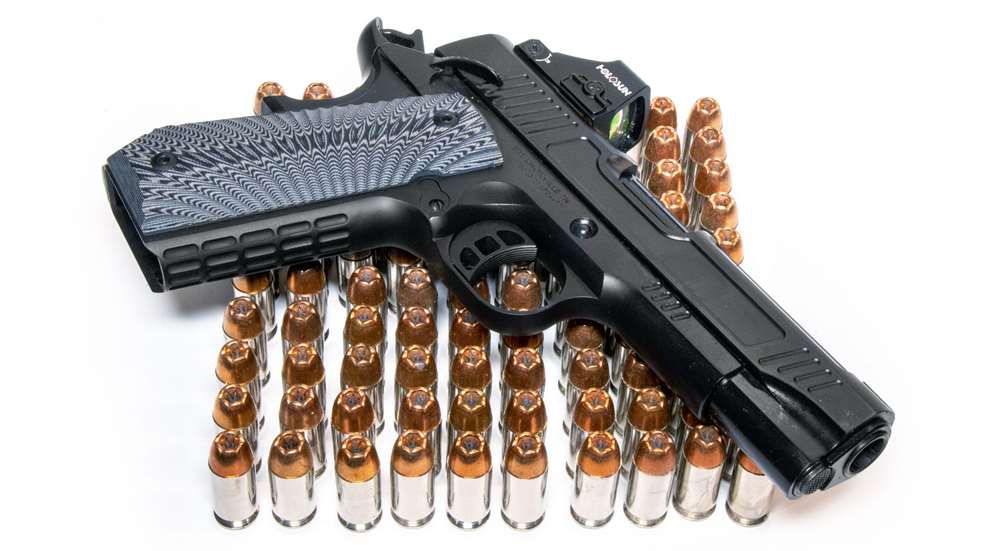
A 100-round test is a start, but ammunition reliability is something that should always be monitored. Manufacturers can make slight changes with loads that your pistol might not like.
Is ammunition the most common reason for stoppages? If you’ve received quality defensive-firearm training, you’ve learned to deal with stoppages through immediate action. As soon as you realize your gun is not working, you immediately begin trying to make it work again, as fast as possible. However, no part of this process is directed at determining what caused the stoppage—the focus is on eliminating it. This is good doctrine, but I believe it’s also the reason ammunition gets blamed for stoppages it does not cause.
As someone who tests guns and ammunition for a living, when I experience a stoppage—most of the time—I do not conduct immediate action, because it’s my job to determine what caused the problem so I can accurately report on it. Instead, I conduct an immediate investigation. Admittedly, this is not the way you should train, but to effectively evaluate what works and what doesn’t, it must be the modus operandi. What I’ve learned, especially with semi-automatic handguns, is that in most cases, shooter error is to blame.
For example, some associates were helping me test several pistols and one shooter kept experiencing stoppages—the slide was locking back while there was still ammunition in the magazine—and he was automatically conducting immediate action. What we discovered was the shooter was allowing his thumb to press against the slide stop while he was shooting. The ammo and the gun worked fine; it was the shooter’s fault. Without investigation, the gun or ammo would have been blamed.
Ammunition is reliable until it isn’t. Just because you’ve tested 50 to 200 rounds is no guarantee a load will be reliable forever. I was recently testing a new handgun, and a round of ammo from a reputable maker registered a muzzle velocity about half what it should have been. The recoil was also very light, and the empty case was not ejected. I’ve fired thousands of rounds of this load and that had never before happened. Also, ammo that might run great in a clean, well-oiled gun may not run so well in a dirty gun. The point is, you should establish reliability up front, but continually monitor it as you shoot.
With carry ammo, I first test it for terminal performance, then for velocity consistency and precision. If it passes those tests, I worry about reliability. I like to shoot approximately 100 rounds conducting practical drills, because you’ll hold and handle a gun differently during drills more like you would in a real-life situation rather than if you’re just banging away. Well-known firearms trainer Ken Hackathorn is of a similar opinion. He prefers to shoot at least 100 rounds of carry ammo before trusting it in an individual gun.
When checking the reliability of one’s carry ammunition, Gunsite Academy Training Director Lew Gosnell likes to shoot a pistol with a relaxed one-handed grip—with both hands—checking for function and ejection. Then he’ll run a full magazine dump at least three times. He says, “If it’s a brand-new load, I’d like at least 100 rounds through that particular gun, and if it’s a new gun, then 200 is better.”
Bill Wilson of Wilson Combat does things a bit differently. He says the way he tests for proper functioning is to “… chamber a round, load the mag to capacity, fire two rounds, top off the mag to full capacity and fire two more rounds. I’ll repeat this process until I’m comfortable with function.” Wilson said he also likes to load one round in the gun and fire it with a one-hand, loose grip to check for positive slide-lock operation, repeating the process at least 10 times.
Whatever the method, forgo the trained response of immediate action and investigate stoppages during the evaluation process. Was it a failure-to-chamber, failure-to-fire, failure-to-extract or failure-to-eject? Did you accidentally allow your thumb to engage the slide stop? Was your grip loose or low? Did you use a faulty magazine or one that was gobbed off with dust and dirt? All of these things can cause a stoppage, and none are the fault of the ammunition.
How often is bad ammunition the cause of a stoppage? Hackathorn suggested that 50 percent of stoppages are user induced, due to manipulation, grip or hand positioning. He felt the remaining 50 percent were caused, equally, by the ammo and the gun. This mostly mirrors my experiences, but I’d add that stoppages caused by a dirty or poorly maintained gun are also shooter induced.
Wilson was a little more specific. He suggests it depends on ammunition selection. If you’re shooting full-power, reliable ammo, he felt most malfunctions are shooter induced. However, when shooting lighter loads and/or very short and/or blunt-bullet loads, the probability of the ammunition being at fault is likely higher.
There are, of course, some guns and certain ammunition loads that just don’t jibe. Typically, though, the problem will rear its ugly head long before 100 rounds have been fired. When you have a pistol that’s been reliable with a particular load and stoppages begin to occur, it’s rarely the fault of the ammunition.
Another common shooter error is unloading your handgun and when reloading, rechambering the round you just removed from the chamber. This is not a good idea, because done repetitively, it can set the bullet back and change the cartridge’s overall length, impacting reliability. It can also be dangerous. In the early days of the .40 S&W, this practice was found to sometimes increase pressure and the guns made a really big bang. When you unload a magazine-fed carry gun, it’s a good idea to cycle the originally chambered round to the bottom. Marking it with a permanent marker is not a bad idea either.
We justifiably worry about reliability, and it seems stoppages most often occur when we can least tolerate them (that’s Mr. Murphy for you). We can never guarantee that a failure won’t occur at the worst possible moment, but what we can do is conduct practical reliability testing with the hopes of limiting the possibility of it happening to us. And, maybe, don’t be so quick to blame the ammunition for failures.





































